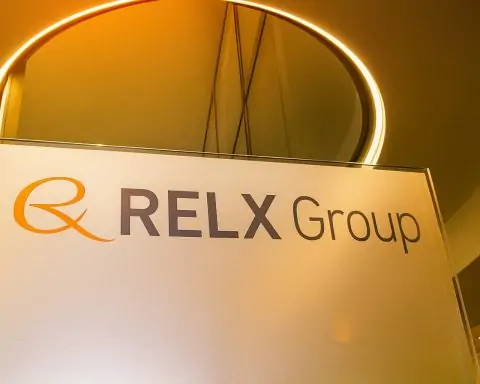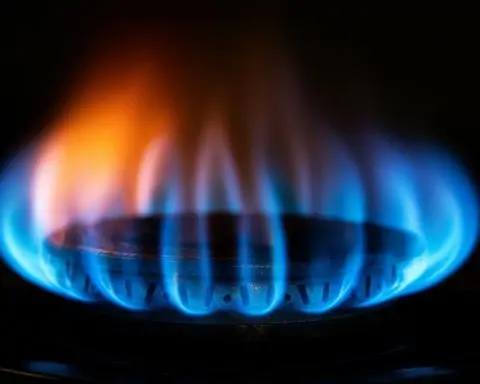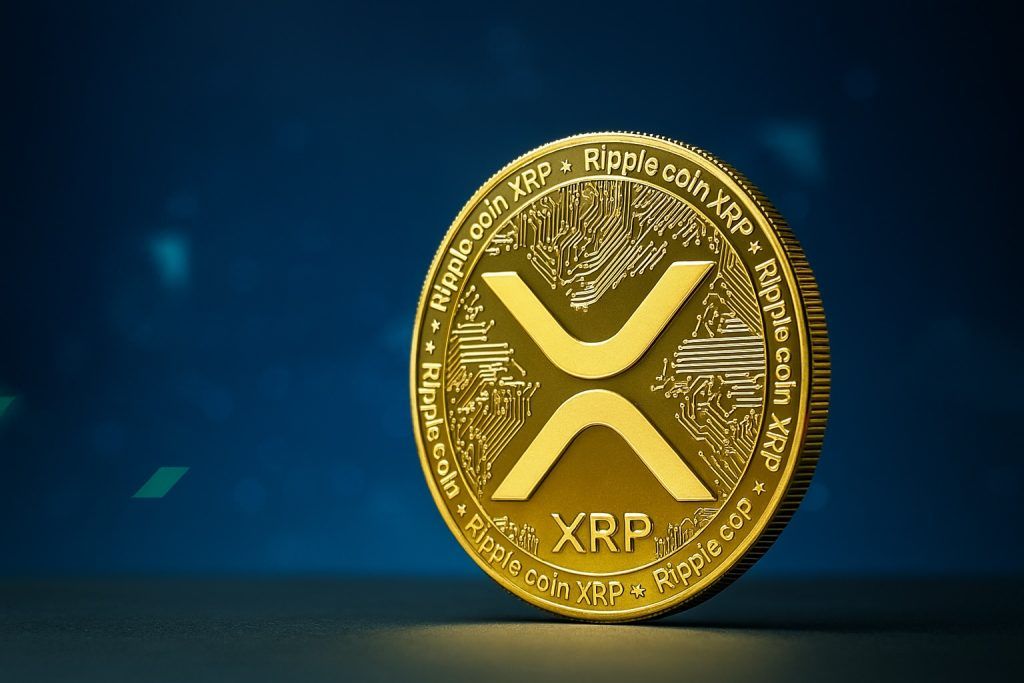- OPEC+ pauses planned production hikes: The oil exporters’ alliance will make only a small supply increase in December (137,000 barrels per day) and halt any further output hikes during the first quarter of 2026 to avoid flooding the market [1]. The cartel cited seasonally weak demand and fears of a glut as key reasons for this cautious move [2].
- Crude prices bounce from 5-month lows: Oil slumped to about $60 per barrel in late October amid oversupply worries, but has since climbed back to the mid-$60s [3]. The rebound has been driven by OPEC’s restraint, a raft of new Western sanctions on Russian oil exports, and optimism from a thaw in U.S.–China trade tensions, all of which tightened sentiment in late October [4]. Early on Nov 3, Brent crude traded around $65 and U.S. WTI near $61, up ~0.6–0.7% after the OPEC+ announcement [5].
- “A calculated blink” by OPEC+: Energy experts say the producers’ cartel is effectively “blinking” to protect prices, but it’s a calculated blink [6]. “The group knows that overproducing now could backfire later,” explains Jorge León of Rystad Energy, noting that uncertainty from sanctions on Russian oil made OPEC+ more cautious [7]. Similarly, UBS analyst Giovanni Staunovo observed that the modest December hike was widely expected by markets, so oil prices were unlikely to move drastically on the news in the immediate term [8].
- Oil stocks surge, fuel-guzzlers face headwinds: The supply pause has lifted energy equities worldwide. Major oil companies’ shares jumped on the news – for example, BP stock rose about 1.5% in London and Shell gained ~1% [9]. Analysts note that Brent prices stabilizing above ~$65 tend to boost oil producers’ profits, supporting stocks like Spain’s Repsol [10]. In contrast, higher fuel costs hurt heavy consumers: airline group IAG and other travel stocks could see pressure as pricier jet fuel raises operating costs [11].
- Mixed forecasts for 2026 prices: OPEC’s move has prompted some bullish revisions, but also highlights lingering downside risks. Morgan Stanley raised its oil price forecast, now projecting Brent at $60 a barrel in the first half of 2026 (up from $57.5) after the output pause signal [12]. The bank argues that OPEC’s intervention sends an important message and “with OPEC involvement, volatility is reduced” [13]. However, the U.S. Energy Information Administration (EIA) still expects a significant supply surplus – it forecasts Brent will average only ~$52 in 2026 as global inventories build [14]. This wide range of outlooks underscores the uncertain balance between production growth and demand going forward.
OPEC+ Pumps the Brakes on Oil Output
The Organization of the Petroleum Exporting Countries and its allies (OPEC+) took a pivotal turn in policy at a meeting on Sunday, Nov 2. Led by Saudi Arabia and Russia, a core group of eight OPEC+ producers agreed to “nudge” oil output up slightly in December but then freeze any further production increases in January, February and March 2026 [15]. This decision marks a notable shift: throughout 2025, OPEC+ had been gradually unwinding its earlier production cuts – adding nearly 2.9 million barrels per day since April – in an effort to regain market share after a period of curtailed output [16].
Now, with global demand growth looking fragile and supply starting to outpace consumption, the cartel has opted to hit pause on its supply ramp-up. The official statement cited concerns about a looming oversupply in early 2026, when fuel demand is typically at its seasonal low point in the January-March quarter [17]. In other words, OPEC+ is proactively trying to prevent the market from tipping into a glut. The modest increase of 137,000 barrels per day in December – the same increment as in the previous two months – will be the last for a while, as the group seeks to “moderate its plans” and avoid overloading the market [18] [19].
This course correction appears to be a direct response to warning signs in the oil market. In mid-October, the International Energy Agency (IEA) sounded the alarm that if producers kept lifting output unabated, the world could face an oversupply of up to 4 million barrels per day in 2026 – an enormous glut equal to ~4% of global demand [20]. The IEA noted that OPEC+ and other producers were adding supply faster than demand was growing, creating the conditions for a price-dampening surplus. In fact, OPEC+’s decision earlier in the fall to accelerate the unwinding of its past cuts was already “adding to fears of a glut and weighing on oil prices” as 2025 went on [21].
By pausing output hikes, OPEC+ is effectively trying to short-circuit the oversupply cycle before it spins out of control. The group’s strategy for much of the past two years had been to restrict output to prop up prices – at one point cutting a total of 5.8 million barrels per day through various agreements [22]. Those cuts (including extra voluntary curbs by Saudi Arabia and others) helped buoy prices but also ceded some market share. With prices softening earlier in 2025, the alliance changed tack and began restoring production. Now, the pendulum is swinging back toward caution. “OPEC+ is blinking — but it’s a calculated blink,” says Jorge León of Rystad Energy, describing the latest pivot. “The group knows that overproducing now could backfire later… By making a pause, OPEC+ is protecting prices, projecting unity and gaining time” to assess the impact of factors like the new Russia sanctions [23]. In short, the cartel would rather err on the side of tightness than risk a price collapse.
Oil Prices Slump and Surge Amid Glut Jitters
OPEC’s preemptive strike against a potential glut comes after a period of notable weakness in oil prices. On October 20, Brent crude sank to around $60 per barrel – a five-month low – as traders reacted to mounting evidence of surplus supply in the market [24]. For context, that was the lowest price level since roughly May 2025 and a stark drop from peaks seen earlier in the year. What drove this slide was the growing sense that production was outpacing demand: global output had been climbing (thanks in part to OPEC+ output hikes and record U.S. shale production), while demand growth showed signs of cooling due to a shaky economic backdrop and improvements in energy efficiency.
Agencies and analysts began flagging the imbalance. The IEA reported that through the first nine months of 2025, the world oil supply had exceeded consumption by almost 1.9 million barrels per day on average, leading to rising inventories [25]. It also observed a surge in oil being held in transit: in September alone, seaborne oil volumes jumped by over 100 million barrels – the biggest increase since the pandemic – driven largely by a flood of Middle Eastern crude hitting the market [26]. Such signals reinforced the idea that if OPEC+ didn’t temper its production ambitions, the coming year could bring a significant oversupply. While OPEC’s own forecasts have been more optimistic about demand (the cartel notably still projects stronger consumption growth than the IEA does), the price action by late October made it clear that traders were pricing in a glut.
However, in the final days of October and into early November, sentiment began to turn. A combination of geopolitical and macroeconomic developments helped oil prices rebound from their lows even before the latest OPEC+ meeting. One major factor was the implementation of new Western sanctions on Russian oil exports. In late October, the United States and United Kingdom imposed stricter measures targeting Russia’s oil sector – including sanctions on energy giants Rosneft and Lukoil – to crimp Moscow’s revenues [27]. These moves immediately raised expectations that Russian supply might tighten in the months ahead, since Russia is a key member of OPEC+ that had been steadily increasing output until then. Indeed, by early November there were “hopes of tighter global supplies in the coming months” due to the sanctions, although many market participants remained cautious, noting that Russia has proven adept at dodging sanctions in the past [28].
At the same time, a surprise breakthrough on the trade front improved the demand outlook. The U.S. and China – the world’s two largest economies – reached a tentative trade truce in late October, easing tariffs and trade barriers [29]. This thaw in relations between President Donald Trump and President Xi Jinping was seen as reducing recession risks and could bolster oil demand (for instance, via increased trade activity and industrial output) going forward. News of the trade détente injected optimism into markets that had been focused on downside scenarios.
Geopolitical risks have also tilted bullish in recent days. Over the weekend just before the OPEC meeting, Ukraine launched a drone strike on one of Russia’s main Black Sea oil ports, escalating a campaign to disrupt Russian energy infrastructure [30]. The attack underscored that the ongoing war could at any time choke supply routes or damage production facilities, introducing a risk premium on the supply side. “Ukrainian attacks on Russian energy infrastructure” have lent support to prices by raising the prospect of unexpected supply disruptions [31] [32]. Although Russia retaliated (striking Ukraine’s power grid in the Zaporizhzhia region), the oil market’s attention is on the potential for conflict to squeeze availability of Russian exports if hostilities intensify.
Against this backdrop of tightening sentiments, the OPEC+ announcement landed as a reinforcing bullish signal rather than a shock. By indicating it will restrain output growth into 2026, the cartel effectively put a floor under prices – or at least removed some of the immediate downside risk. On Monday, November 3, as Asian markets opened, crude futures edged higher. Brent crude gained roughly 0.6% to trade above $65 a barrel, while U.S. WTI climbed about 0.7% toward $61 [33]. This moderate uptick confirmed what some analysts predicted: because a small December supply increase was telegraphed in advance, much of the news was already priced in. “It’s unlikely that oil prices move much when markets open Monday, since the modest December hike was widely expected,” UBS oil analyst Giovanni Staunovo had noted ahead of the trading day [34]. Indeed, rather than a spike, the reaction was a controlled rise – suggesting traders found reassurance in OPEC’s prudence, but were not panicked about immediate shortages.
Market Winners and Losers: Stocks React to OPEC’s Move
The ripple effects of OPEC’s production pause were felt not only in commodity pits but also on stock exchanges around the world. Energy companies – the obvious beneficiaries of higher oil prices and disciplined supply – saw their shares jump as investors rotated back into the sector. In London, oil majors were among the top gainers on the FTSE 100 index on Nov 3: BP’s stock climbed about 1.75% by mid-morning and Shell rose roughly 1% [35]. Similar gains were evident for other oil producers globally, reflecting anticipation of improved revenues if oil prices hold above recent lows. A stable or rising crude price directly boosts the upstream earnings (exploration and production) of these companies, and also tends to lift refining margins (though higher crude can squeeze refiners if product prices don’t keep up).
In Spain, where the benchmark IBEX 35 index has significant energy and travel exposure, the divide between winners and losers was particularly clear. Repsol, Spain’s largest oil & gas group, got an immediate boost from Brent’s rally above $65. Analysts note that Repsol’s exploration and production division benefits strongly when oil stays elevated, “as long as refining margins don’t deteriorate” [36]. The OPEC+ decision, by supporting crude prices, thus provided a tailwind for Repsol’s stock. On the flip side, companies for whom oil is a major input cost faced a tougher outlook. Chief among these are airlines: jet fuel is one of their biggest expenses. International Airlines Group (IAG) – the parent of British Airways and Iberia – was highlighted as vulnerable, since costlier fuel acts as a headwind for profits [37]. Although many airlines hedge their fuel prices in advance, sustained higher oil can eventually filter through to increased operating costs or fares, potentially softening demand for air travel. IG Market’s senior analyst Sergio Ávila pointed out that fuel-intensive sectors (like aviation and transport) may see a drag in performance if oil remains firm, whereas the overall stock market impact will balance out depending on how other sectors (banks, defensive stocks, etc.) perform in tandem [38] [39].
Beyond individual stocks, the broader market implications are nuanced. Increases in oil prices can lift equity markets in oil-exporting regions or indices heavily weighted with oil companies, while putting pressure on indices dominated by oil-consuming industries. For instance, U.S. stock markets were modestly higher on Nov 3, as gains in energy shares helped offset any concerns about higher input costs elsewhere [40] [41]. Meanwhile, in sectors like chemicals, trucking, or airlines, investors may grow cautious if fuel stays expensive. There’s also a macroeconomic angle: a sustained rise in oil prices can nudge inflation higher, which in turn influences interest rate expectations and thus stock valuations. However, at the mid-$60s per barrel, Brent is still not at levels that ring alarm bells for inflation (indeed, prices are lower than they were earlier in 2025). Many analysts see the current range – $60–65 – as something of a sweet spot: high enough to revive oil industry investment and stock performance, but not so high as to severely threaten consumers or growth.
It’s also worth noting currency effects: a stronger U.S. dollar can blunt the oil rally in local currency terms. As of Nov 3, the dollar was steady (around EUR/USD 1.15), which means European importers will feel the full effect of higher dollar-priced oil [42]. European economies and companies reliant on imported energy will be closely watching both the commodity price and the currency moves. Should the dollar weaken on soft U.S. economic data, that could provide extra support to oil (as a cheaper dollar often lifts commodity prices) [43]. Conversely, a resurgent dollar would make oil more expensive in local terms for Europe and Asia, potentially dampening demand somewhat. Central banks and investors will thus be monitoring how OPEC’s actions feed through to prices at the pump and industrial input costs in the coming weeks.
Expert Views: OPEC’s “Calculated Blink” and Signals to the Market
OPEC’s delicate balancing act is drawing a range of reactions from oil market experts, industry insiders, and even officials within the group. The consensus is that the alliance’s pause on output hikes is a clear message that price support now takes priority over aggressive growth in market share. Jorge León, a senior analyst at Rystad Energy and a former OPEC adviser, characterized the move as a prudent retreat in the face of looming headwinds. “OPEC+ is blinking — but it’s a calculated blink,” León quipped, speaking to Reuters. “Sanctions on Russian producers have injected a new layer of uncertainty into supply forecasts, and the group knows that overproducing now could backfire later.” By pausing increases, “the OPEC+ is protecting prices, projecting unity, and gaining time to see how the sanctions affect Russian barrels,” he added [44]. This encapsulates the view that OPEC+ would rather tighten a bit too much than risk a free-fall in prices – especially given that some members (like Russia) may struggle to meet higher quotas under sanctions anyway.
From a financial markets standpoint, some see the OPEC+ decision as shoring up confidence and tamping down volatility. Analysts at Morgan Stanley noted that even though the announced pause doesn’t materially change the near-term supply-demand math (since it was mostly expected), it “does send an important signal” to the market [45]. With OPEC proactively managing supply, traders may feel more assured that extreme swings in price will be mitigated. This sentiment was echoed by traders who interpret OPEC’s unified stance as a form of backstop – a signal that the group will intervene to prevent a severe downturn. The immediate calm reaction in oil futures (a modest rise rather than a spike) suggests that volatility indeed eased; had OPEC surprised in the opposite direction (e.g. insisting on further increases despite glut fears), the market might have reacted with a sharper selloff.
There are, however, varying opinions on how the scenario could play out. Some market-watchers caution that OPEC+ unity can be fragile. It’s one thing to announce a pause, but another to enforce it: individual countries might be tempted to exceed their production targets if prices rise too much, undermining the group’s effort. For now, though, compliance has been reasonably strong, and key players like Saudi Arabia seem committed to steering the market carefully. In public comments, OPEC officials have put a brave face on demand trends. Suhail al-Mazrouei, the energy minister of the United Arab Emirates, downplayed oversupply concerns at an industry conference, arguing that robust demand growth from new sectors (like AI data centers) is on the horizon. “All of what we are seeing is more demand,” Mazrouei said when asked about a possible glut in 2026 [46]. He emphasized the need for continued investment in oil capacity, implying that prices must stay at levels that incentivize output in the long run [47]. This perspective highlights a fundamental tension: while agencies like the IEA foresee a demand slowdown, OPEC officials often project higher demand and caution against letting prices fall too low (which could deter investment in supply).
Another expert voice, Giovanni Staunovo of UBS, pointed out the psychological aspect of OPEC’s maneuver. Because the December output rise of 137,000 barrels per day was telegraphed and modest, “the market had largely anticipated it”. This meant there was no panic or euphoria on the news – a sign that OPEC+ managed to telegraph its intentions effectively [48]. In Staunovo’s view, the real impact is in what comes next: whether the pause truly prevents an inventory build-up in Q1 2026. If global oil stocks still rise significantly during the pause (due to non-OPEC supply growth or weaker demand), then prices could come under renewed pressure, at which point OPEC+ might have to consider actual cuts or extended freezes later in 2026. On the other hand, if the pause, combined with any supply disruptions or stronger demand, succeeds in tightening balances, OPEC might resume gentle increases in Q2 without harming prices. Essentially, the cartel has bought itself time and optionality.
2026 Outlook: Can OPEC Keep Prices Steady?
The divergent forecasts from industry observers underscore that the oil market’s 2026 trajectory is anything but certain. By intervening now, OPEC+ clearly hopes to engineer a soft landing – avoiding a price crash and maintaining a floor under crude prices (perhaps in the $60 range) through the first part of next year. Some early signs indicate this strategy may be having the intended effect on expectations. In response to the Nov 2 announcement, Morgan Stanley’s commodities team revised their price outlook upward, now predicting Brent crude will average about $60 per barrel in the first half of 2026 [49]. The bank cited OPEC’s demonstrated willingness to act as a positive factor that should reduce downside price risk. In their words, even though the supply pause doesn’t drastically alter physical balances, it “does send an important signal” to the market about OPEC’s resolve, which in turn should help curb volatility and price tail risk [50]. In practical terms, a less volatile market around a stable midpoint price is good for both producers (who get predictability and decent revenues) and consumers (who avoid price spikes).
Not everyone is convinced that $60+ oil will stick, however. The U.S. Energy Information Administration (EIA), in its latest short-term outlook (released just weeks ago on Oct 7), projected a rather bearish scenario for next year. The EIA expects global oil inventories to continue rising through 2025 and 2026, given robust supply growth, especially from non-OPEC producers [51]. As a result, it forecast Brent prices to decline to an average of $52 per barrel in 2026 [52] – significantly lower than today. This forecast assumed that without intervention, the market would tip into surplus and pressure prices downward. Notably, the EIA did factor in some OPEC+ restraint; it assumed OPEC+ would not fully meet its announced targets (i.e. some members would produce below quota) in order to prevent “inventory builds from accelerating too quickly” [53]. Even so, the sheer volume of new supply coming online from other sources (the U.S., Brazil, Guyana, Canada and others are all ramping up output) could overwhelm demand growth, which the EIA sees at only ~700,000 barrels per day per year in 2025 and 2026 [54]. This is a relatively tepid demand increase, reflecting factors like slower economic growth and the ongoing shift to electric vehicles and renewables cutting into oil use [55]. If reality aligns with this scenario, OPEC+ may find it challenging to prop up prices without making deeper cuts or extending the pause far longer.
The truth may lie somewhere between the more bullish industry forecasts and the bearish official ones. Much will depend on external variables that are hard to predict: the trajectory of the global economy (a severe recession would sap oil demand much more, whereas a soft landing could keep demand growing), the pace of China’s post-pandemic recovery, and geopolitical wildcards. For instance, if the conflict involving Russia were to disrupt oil flows significantly or if tensions escalate in the Middle East, supply could tighten unexpectedly, supporting higher prices than the base-case forecasts. Conversely, if diplomatic efforts bore fruit (e.g. a durable ceasefire in Ukraine or a revival of the Iran nuclear deal allowing more Iranian oil exports), additional supply could cap prices.
One clear takeaway is that OPEC+ will closely monitor the market and stands ready to adjust its strategy. The group has a full ministerial meeting scheduled for Nov 30, where all members (not just the core eight) will convene to review the situation [56]. By then, they will have a few more weeks of data on demand and inventories, as well as clarity on winter conditions (a colder winter could boost oil demand for heating, for example). If prices were to unexpectedly plunge or if compliance falters, OPEC+ might even consider revisiting production levels sooner. On the other hand, if the market stabilizes near the current range, they may simply reaffirm the Q1 pause and leave production targets unchanged until the end of March 2026, as planned.
For the broader public and investors, the current development means a period of relative stability in oil prices compared to the wild swings of recent years. Gasoline and diesel prices at the pump, which track crude with a lag, could ease slightly from October’s levels if the rebound stays in check, but are unlikely to plummet given OPEC’s intervention to support the market. Consumers and businesses can tentatively expect oil prices in a mid-range – not soaring toward $100 as feared during past geopolitical scares, but not collapsing toward $50 either, barring a major economic downturn. OPEC+, with its latest maneuver, is aiming for that middle ground: preventing a glut-induced price crash while also avoiding overheating the market.
In summary, the oil market entering 2026 is being steered between two shoals: the Scylla of oversupply and the Charybdis of undersupply. OPEC’s production pause is a signal that the group is determined to avoid the former, even if it means sacrificing some market share gains for now. The immediate effect has been to calm markets and lift oil prices off their lows, to the relief of oil producers and their shareholders. Yet, as forecasts and experts highlight, significant challenges remain. A wave of non-OPEC oil is on the horizon, and demand growth is not a given. The next few months – with OPEC+ in a holding pattern – will reveal whether the cartel’s calculated gamble pays off by keeping prices afloat. If not, we can expect OPEC and its allies to reconvene with potentially tougher measures (such as renewed output cuts) to stave off any severe downturn. For now, though, the oil bulls have the upper hand, and the market’s mantra has become “trust in OPEC+” to manage the delicate rebalancing act in the year ahead.
Sources: Oil industry news and market data [57] [58] [59] [60] [61] [62], expert commentary from analysts and OPEC officials [63] [64] [65], and recent reports by agencies like IEA and EIA highlighting the supply-demand outlook [66] [67].
References
1. www.theguardian.com, 2. www.investing.com, 3. www.theguardian.com, 4. www.theguardian.com, 5. www.investing.com, 6. www.theguardian.com, 7. www.theguardian.com, 8. elpais.com, 9. www.theguardian.com, 10. www.ig.com, 11. www.ig.com, 12. www.theguardian.com, 13. www.theguardian.com, 14. www.eia.gov, 15. www.theguardian.com, 16. www.investing.com, 17. www.investing.com, 18. elpais.com, 19. elpais.com, 20. www.reuters.com, 21. www.reuters.com, 22. elpais.com, 23. www.theguardian.com, 24. www.theguardian.com, 25. www.iea.org, 26. www.reuters.com, 27. elpais.com, 28. www.investing.com, 29. www.theguardian.com, 30. www.investing.com, 31. www.investing.com, 32. www.investing.com, 33. www.investing.com, 34. elpais.com, 35. www.theguardian.com, 36. www.ig.com, 37. www.ig.com, 38. www.ig.com, 39. www.ig.com, 40. www.investing.com, 41. www.investing.com, 42. www.ig.com, 43. www.ig.com, 44. www.theguardian.com, 45. www.theguardian.com, 46. www.theguardian.com, 47. www.theguardian.com, 48. elpais.com, 49. www.theguardian.com, 50. www.theguardian.com, 51. www.eia.gov, 52. www.eia.gov, 53. www.eia.gov, 54. www.reuters.com, 55. www.reuters.com, 56. elpais.com, 57. www.theguardian.com, 58. www.theguardian.com, 59. www.theguardian.com, 60. www.ig.com, 61. www.theguardian.com, 62. www.eia.gov, 63. www.theguardian.com, 64. elpais.com, 65. www.theguardian.com, 66. www.reuters.com, 67. www.reuters.com









